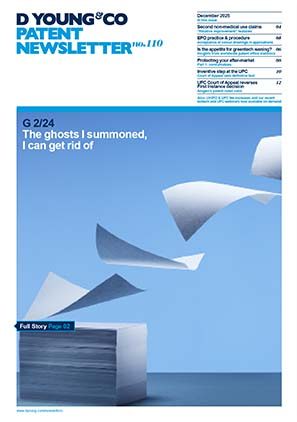SPCs: new formulations of previously marketed active ingredients
Supplementary Protection Certificates (SPCs) are available in EU member states for medicinal or plant protection products where (among others) the product is protected by a basic patent and where a valid marketing authorisation (MA) has been granted for the product in an EU or EEA member state. An additional requirement for the grant of an SPC is that the MA must be the first authorisation to place the product on the market in the EU or EEA (Article 3(d) of the SPC Regulation).
The case at issue here was concerned with the question of whether a marketing authorisation for a new formulation of a previously known and previously marketed active ingredient could constitute the “first authorisation” within the scope of Article 3(d).
Background
C-443/17 is based on a referral from the High Court in England & Wales, to which Abraxis had appealed a decision from the UKIPO to refuse their application for an SPC for their product: Abraxane® (see our review in our December 2016 newsletter.
Abraxane® contains a combination of nanoparticles of paclitaxel coated with albumin (nab-paclitaxel). It was claimed by Abraxis that nab-paclitaxel demonstrated greater efficacy than earlier formulations of paclitaxel for the treatment of certain cancerous tumours. An MA was granted for nab-paclitaxel in 2008. However, it was not disputed that paclitaxel had been marketed in another form by other companies under previous MAs prior to the date on which the MA for nab-paclitaxel was granted to Abraxis.
On the basis that the MA granted for nab-paclitaxel in 2008 was not the “first authorisation” to place the product on the market, the UKIPO refused the application for an SPC. In particular, it held that, although Article 3(d) permits the grant of an SPC for a new and inventive therapeutic use of an old active ingredient, its scope does not extend to a new and inventive formulation of an old active ingredient.
Question referred to CJEU
Abraxis appealed this decision on the basis that an MA for a new and inventive formulation did meet the requirements of Article 3(d) based on the solution in C-130/11, Neurim Pharmaceuticals (reviewed in our July 2012 newsletter:
The Patents Court took the view that the scope of the judgment in Neurim was not clear, and thus referred the following question to the CJEU :
“Is Article 3(d) of [the SPC Regulation] to be interpreted as permitting the grant of an SPC where the [marketing authorisation] referred to in Article 3(b) [of that regulation] is the first [marketing authorisation] within the scope of the basic patent to place the product on the market as a medicinal product and where the product is a new formulation of an old active ingredient?”
The CJEU noted that, in order to answer this question, the court in fact needed to answer two questions as set out below.
1.Is a new formulation a new “product” within the meaning of the SPC Regulation?
The CJEU first considered the definition of the term “product” provided in Article 1(b) of the SPC Regulation, and whether a new formulation of an old active ingredient could be considered to fall within this definition.
In other words, the CJEU first considered whether the new formulation (nab-paclitaxel) consisting of a carrier linked together with an old active ingredient (paclitaxel) in nanoparticle form constituted a different product to the previous product that consisted solely of the same active ingredient.
Article 1(b) of the SPC Regulation stipulates: “product” means the active ingredient or combination of active ingredients of a medicinal product.
Referring to established case law, the CJEU noted that an “active ingredient” does not include substances forming part of a medicinal product that do not have an effect of their own on the human or animal body. Established case law also provides that the term “product” is understood to mean an active ingredient in the strict sense, irrespective of pharmaceutical form.
The CJEU thus held that, since the albumin carrier in nab-paclitaxel does not have any therapeutic effect of its own, it cannot be regarded as being an active ingredient within the meaning of Article 1(b), even if its association with the active ingredient leads to an increased efficacy. It was further noted that the combination of albumin with paclitaxel could not be regarded as a combination of active ingredients within the meaning of Article 1(b).
Therefore, it was held that a new formulation of an old active ingredient which consists of that active ingredient with a non-therapeutic carrier cannot be regarded as being a product that is distinct from the product consisting solely of that active ingredient.
In essence, the answer to question 1 was: no.
2.Is the MA for the new formulation the first authorisation to place the product on the market?
It follows from the answer to the first question, that the answer to the second question was also no since the product, nab-paclitaxel, was not considered to be a distinct product from the previous product, paclitaxel.
The CJEU noted, in particular that “a literal interpretation of Article 3(d) of [the SPC Regulation] presupposes that the first MA for the product as a medicinal product within the meaning of that provision means the first MA for a medicinal product incorporating the active ingredient or the combination of active ingredients at issue”. Thus, only the MA in respect of the first medicinal product consisting of the product concerned may be regarded as the first MA within the meaning of Article 3(d).
The CJEU thus concluded that Article 3(d) in conjunction with Article 1(b) must be interpreted to mean that the MA relied on in support of an SPC application concerning a new formulation of an old active ingredient cannot be regarded as being the first MA for the product concerned, where that active ingredient has already been the subject of an MA.
Objectives of the SPC Regulation
In arriving at this conclusion, the CJEU pointed out that the entire purpose of the SPC Regulation is to encourage research into new medicinal products by compensating applicants for the time and money invested in drug development.
However, as set out in the Explanatory Memorandum of 11 April 1990 to the Proposal for a Regulation, the legislation is intended to protect not all pharmaceutical research giving rise to the grant of a patent, but to protect research leading to the first placing on the market of an active ingredient or a combination of active ingredients as a medicinal product.
The CJEU considered that such an objective would be contravened if one had to ignore a previous MA which had already been granted for an active ingredient when considering merely a new formulation of an old active ingredient.
With regard to Abraxis’s arguments regarding Neurim, the CJEU did not consider that that case allowed for a broader interpretation of Article 3(d). Rather, Neurim merely allowed for the grant of an SPC for a new therapeutic application of an old product even if the same product had been the subject of an earlier MA but for a different therapeutic application, provided that the new application is within the limits of protection conferred by the basic patent. This was not the case for nab-paclitaxel, which was authorised for the same application as previous formulations.
The take-home message must therefore be that an SPC cannot be granted for a new formulation of an active ingredient if that active ingredient has already been the subject of an earlier MA.
This is irrespective of the fact that the formulation itself may be the subject of a granted patent, and thus be considered to be new and inventive.
This decision therefore supports a narrow interpretation of Article 3(d) of the SPC Regulation, with the decision taken in Neurim to be seen perhaps as a narrow exception to the rule.
Case details at a glance
Jurisdiction: European Union
Decision level: Court of Justice
Parties: Abraxis Bioscience LLC, Comptroller General of Patents
Citation: C‑443/17
Date: 21 March 2019

